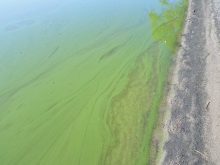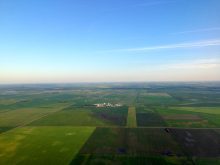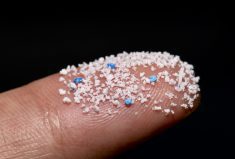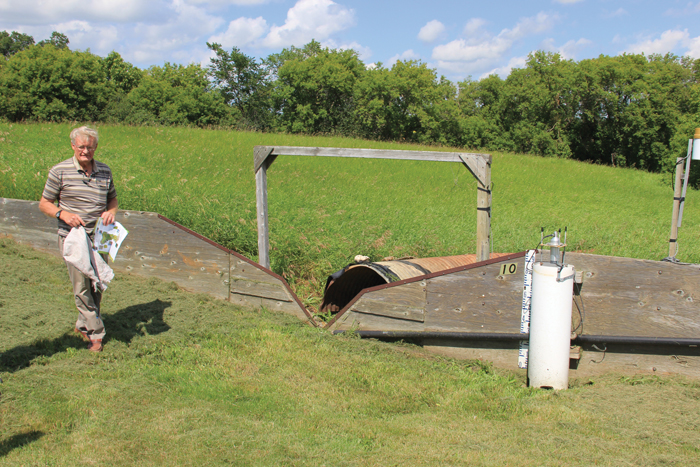It is not your great-granddaddy’s farm anymore.
While some may have nostalgia for the old farm with a little red barn that housed a few chickens, a couple of pigs and a dairy cow, it is better for both the environment and the economy that agriculture has modernized.
Today’s farmer has taken, and is taking, key steps to protect our natural resources while maintaining economic sustainability. Farmers are a critical part of creating the solutions to today’s environmental challenges while fostering economic growth and job development.
Read Also

The new spin on farm legacy
Farmers are starting to think differently about the future of their farms in Western Canada. What does this mean for the next generation and farm succession planing?
Being part of the environmental solution includes resolving the algae problem in Lake Winnipeg.
People across the country are concerned about the health of the lake. Nutrients are fertilizing algae blooms that consume oxygen in the water, which in turn harm fish populations and other natural life in the lake. Algae-covered beaches limit everyone’s enjoyment of the lake and harm businesses that rely on Manitoba’s short tourist season.
There have been countless studies and action plans, but solving this complex problem remains elusive.
- Letters: Stronger actions needed on Lake Winnipeg
- Related: ALUS and corporate partners launch Lake Winnipeg project
Some have pointed fingers at Manitoba’s farmers as contributing to problems at Lake Winnipeg. This ignores the significant strides that agriculture has taken to ensure the right nutrients are put in the right place and at the right time to maximize crop growth and limit nutrient runoff.
Gone are the days of the little red barn where manure was spread on the field surface without knowing its nutrient content or what that crop needed in terms of added nutrients. Modernization of agriculture has revolutionized nutrient management.
Take today’s hog operations in Manitoba as an example. Before applying manure, farmers are required to file manure management plans with the provincial government. These plans are tailored to the specific crop being grown and include soil sampling to prevent over-application of nutrients.
More than 90 per cent of hog manure in Manitoba is injected below the soil surface or incorporated into the soil immediately after application to prevent runoff and to position this valuable nutrient next to the seed where it is needed. Before application, the manure is sampled to get an accurate understanding of its nutrient content.
Advances in technology are making manure application more precise. Modern equipment can test the flow as it is being applied using near infrared technology and vary rates on a real-time basis. Farmers use global positioning technology, ultrasonic speed sensors and radar to ensure that manure is applied in the right place and at the right rate.
The technology allowing farmers to maximize the benefits of this natural fertilizer also helps minimize nutrient leaching into waterways, including Lake Winnipeg. Similar advances in precision farming allow those who use synthetic fertilizers to apply plant nutrition in a way that maximizes its value.
Modern agriculture uses plant nutrition more precisely and efficiently while reducing the potential for negative environmental impacts and producing more food for consumers in Canada and around the world.
This is what being part of the solution means to Manitoba’s farmers.
Being part of the solution can also mean taking action beyond the farm. Farmers are prepared to do this and are ready to participate in a broad effort to develop solutions to the challenges facing Lake Winnipeg.
As a first step, we need to bring together expertise from all parts of the Lake Winnipeg basin – call this the Lake Winnipeg Task Group. This group, which can be called together by the Province of Manitoba, should include representatives from livestock agriculture, grain and oilseed farmers, First Nations and Manitoba municipalities, including the City of Winnipeg. It should also include third-party scientific expertise to steer the discussions.
The task group should be given a mandate to outline science-based measures designed to reduce nutrient flow into the lake.
Some potential action items have already been discussed, such as rehabilitating marshes that filter incoming water, ensuring untreated sewage does not flow into the Red River and increasing the understanding of the “right source, right place, right rate and right time” principles for nutrient application in agriculture.
The task group should be charged with presenting ways to break down barriers to adoption of these known solutions, as well as new ideas to keep Lake Winnipeg healthy.
Finally, the task group should be forward looking and action oriented, rather than a body that rehashes the finger pointing of the past.
– Cam Dahl is the general manager of the Manitoba Pork Council.















